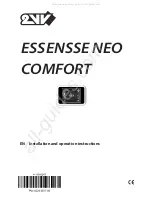
Danaher Motion
06/2005
Overview
Camming links master and slave axes by a cam table. Camming has all the
features of gearing, plus the cam table can have any number of points. The
cam points are in x-y format so spacing can be provided independently.
Multiple tables can be linked together, allowing you to build complex cam
profiles from simpler tables. There is a cycle counter that lets you specify
how many cycles to run a cam before ending.
The MC supports multi-tasking with up to 256 tasks, running at up to 16
different priority levels. Each task can generate OnEvent(s), for code that you
want executed when events occur such as switches tripping, a motor
crossing a position, or just about any combination of factors.
1. 4
I/O
The MC provides 23 optically-isolated inputs and 20 optically-isolated
outputs as standard features, in addition to limit switches and other drive I/O
points that are connected directly to the drives and transferred to the MC via
SERCOS. Additionally, each SERVO
STAR
drive provides hardware for six
I/O points: three digital inputs, one digital output, a 14-bit analog input, and a
12-bit analog output. An auxiliary encoder can also be connected to any
SERVO
STAR
drive.
If you need more I/O, the MC includes a PC104 bus. Each MC can
accommodate as many as two PC104 cards. You can also add I/O to your
PC bus or other field buses such as DeviceNet and ProfiBus, and your
application controls it all. The figure below shows the various possible I/O
options.
SERVO
STAR
MC
Standard I/O
Field
Bus
Field I/O
SERCOS
SERVO
STAR
Auxillary I/O
PC-104
I/O Cards
PC-104
Mezzanine Bus
PC Field
Bus Cards
PC I/O Cards
Host CPU
PCI Bus
1. 5
SERCOS
The SERCOS interface™ (developed in the mid-1980’s) provides an
alternative to the analog interface for communicating between motion
controllers and drives. In 1995, SERCOS became an internationally
accepted standard as IEC 1491 and later was continued to standard IEC
61491. The popularity of SERCOS has been steadily growing. All signals are
transmitted between controller and drives on two fiber optic cables. This
eliminates grounding noise and other types of Electro-Mechanical
Conductance (EMC) and Electro-Mechanical Interference (EMI).
M-SS-005-03 Rev
E
3













































